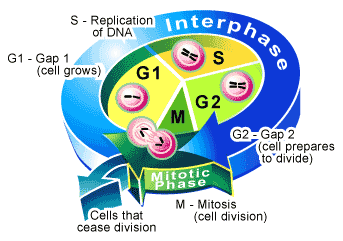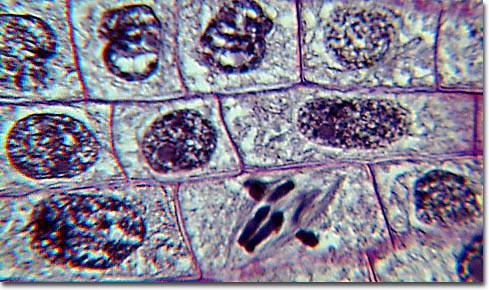
Genetics:
The scientific study of heredity.

True-breeding:
Term used to describe organisms that produce offspring identical to themselves if alowed to self-pollinate.

Trait:
A specific characteristic that varies from one individual to another.

Hybrd:
The offspring of crosses between parents with different traits.

Gene:
Sequence of DNA that codes for a protein and thus determines trait.

Allele:
One of a number of different forms of a gene.

Segregation:
Separation of alleles during gamete formation.
Gamete:
Specialized cell involved in sexual reproduction.

Probability:
Likelihood that a particular event will occur.

Punnett Square:
Diagram showing the gene combinations that might result from a genetic cross.

Homozygous:
Term used to refer to an organism that has two identical alleles for a particular trait.

Heterozygous:
Term used to refer to an organism that has two different alleles for the same trait.

Phenotype:
Physical characteristics of an organism.

Genotype:
Genetic makeup of an organism.

Independant Assortment:
Indpendant segregation of genes during the formation of gametes.

Incomplete Dominance:
Situation in which one allele is not completely dominant over another.

Codominance:
Situation in which both alleles of a gene contribute to the phenotype of the organism.

Multiple Alleles:
Three or more alleles of the same gene.

Polygenic Traits:
Trait controlled by two or more genes.
Homologous:
Term used to refer to chromosomes that each have a corresponding chromosome from the opposite-sex parent.

Diploid:
Term used to refer to a cell that contains both sets of homologous chromosomes.

Haploid:
Term used to refer to a cell that contains only a single set of chromosomes and therefore only a single set of genes.
Meiosis:
Process by which the number of chromosomes per cell is cut in half through the separation of homologous chromosomes in a diploid cell.
Tetrad:
Structure containing 4 chromatids that forms during meiosis.
Crossing-over:
Process in which homologous chomosomes exchange portions of their chromatids during meiosis.

Gene Map:
Diagram showing the relative locations of each known gene on a particular chromosome.













